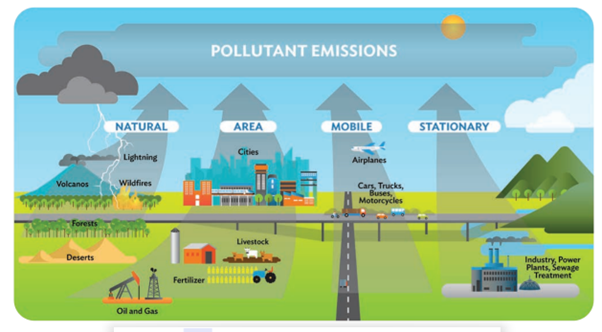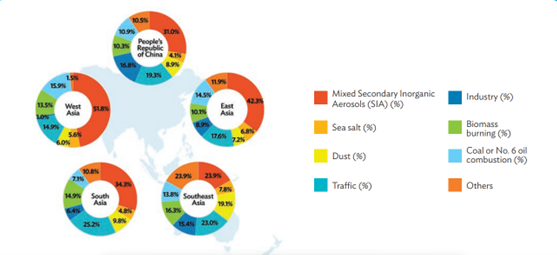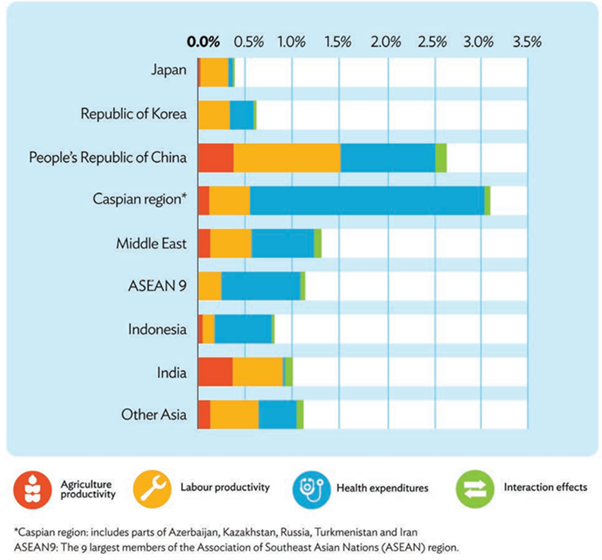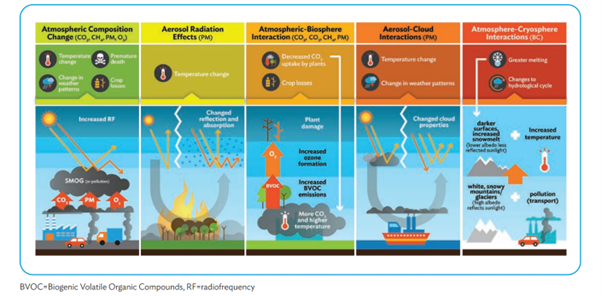nCa Special Feature on World Earth Day
Without air and water – absolutely essential for sustaining life – our planet will be no different from the other billions of planets orbiting around millions of stars.
Unfortunately, we mostly take the air for granted.
Let’s get right to the heart of the matter —– According to the WHO estimates, as quoted in a UNDP report, the worldwide ambient (outdoor) pollution accounts for:
Also, see this infographic from WHO:
And, here is city ranking based on annual average PM2.5 (μg/m³) concentration in 2020, compared to WHO PM2.5 recommended value (10 μg/m3, annual-mean)
UNDP Report – Tackling air pollution in Europe and Central Asia – 23 June 2021
https://www.undp.org/eurasia/publications/tackling-air-pollution-europe-and-central-asia
To understand this infographic, here is the explanation of PM2.5:
Fine particulate matter (PM2.5) is also referred to as “particulates” or “fine particles”. The term PM2.5 refers to tiny particles of solid or liquid with a diameter of 2.5 microns or less suspended in the air.
PM2.5 can enter the respiratory system and is linked to a range of adverse effects on respiratory and cardiovascular health. The main sources of PM2.5 are activities such as the use of fossil fuels in vehicles, power stations, agriculture, combustion in the home and in industrial processes, as well as wind-blown dust from construction and agriculture.
PM2.5 can also be formed as a secondary pollutant due to reactions between other chemicals in the atmosphere. Exposure to PM2.5 is linked with a range of respiratory and other health impacts
Here is the visual representation of a human head and torso showing the health impacts of air pollution:
Some of the air pollutants:
And, their sources:
Source contributions to PM2.5 emissions:
Projected impact of air pollution on GDP i n 2060:
The interaction between air quality and climate change:
Except where mentioned earlier, most of the graphics here are taken from the ADB report – Air Quality in Asia: Why Is It Important, and What Can We Do?
https://www.adb.org/publications/air-quality-asia
Six priority areas that need tackling in tandem with air pollution
* * *
WHO air quality and pollution ranking can be seen here:
https://www-iqair-com.translate.goog/world-air-
* * *
AQCA (Air Quality Central Asia) is a platform that needs energetic ownership from the regional countries and the related regional and international organizations.
https://aqcaplatform.asia/conference/en
The first AQCA platform conference took place in Bishkek from 10 to 11 March 2022 within the theme of improving air quality in Central Asian countries. The conference was organized to discuss, learn and share experience about air pollution, air quality monitoring and management.
* * *
A World Bank blog by Lilia Burunciuc recommends five measures for Central Asia.
https://blogs.worldbank.org/europeandcentralasia/five-steps-for-cleaner-air-in-central-asia
- Improve air quality monitoring
- Overhaul industry permits
- Shift to cleaner fuels and technologies step-by-step
- Incentivize change
- Aggressive, but achievable timelines
* * *
Ashgabat has the cleanest air in Central Asia but that is no reason to be complacent. Air Quality Management is a never-ending task – the moment you stop making effort, things begin to slide downhill.
Likewise, Bishkek has the most harmful air but instead of being discouraged, it is the moment to actively apply the air quality management methods and technologies.
The important thing is that the entire region must act together. /// nCa, 22 April 2023











